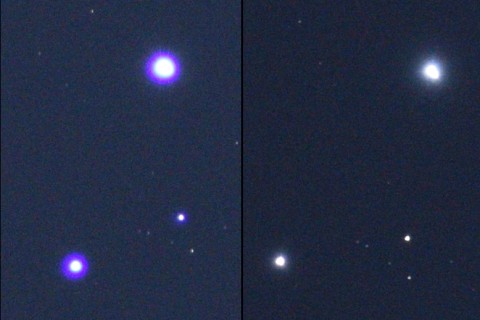Telescope Review
TS-Optics TS71SDQ
Purchase price: EUR 730.00 (OTA)
Dealer: Teleskop-Service Ransburg GmbH, Germany
Conclusion: A regret-free purchase
Please appreciate that this review reflects personal impressions and views.
The TS-Optics TS71SDQ is a quadruplet apochromatic refractor composed of an air-spaced triplet FPL-53 glass objective with integrated field corrector lens eliminating need for an optional field flattener. The clear aperture is 71mm with a focal length of 450mm resulting in a focal ratio of 6.3 which is desirable for wide field deepsky astrophotography. Thanks to its 2.5" focuser and internal baffle design, the telescope provides a Ø44mm image circle entirely illuminating a full frame sensor with an optically corrected field. The rock-solid Rack & Pinion slip-free draw tube with 55mm travel is 360° rotatable, features a millimeter scale and is constructed for up to 4kg photographic gear. The telescope arrived undamaged in a double cardboard box. A quick test with a Cheshire showed well aligned optics. The internal flattener renders collimation a delicate task in that the scope is best factory-calibrated, should need ever be.
The telescope is manufactured in the Far East which does not at all implicate inferior quality, but it explains the design similarity with, say, Sharpstar and Tecnosky APOs. The TS71SDQ is an identical iteration of the Sharpstar 71SDQ. FULL SCREEN PHOTOThe TS71SDQ is a larger iteration of the TS65SDQ with 65mm aperture and 420mm focal length (f/6.5) which is enjoying excellent user reviews. Their big brother is the TS86SDQ with 86mm aperture and 464mm focal length (f/5.4), anyway...
Astrograph
Developed primarily with imaging in mind, the TS71SDQ delivers a 4.6° x 3.1° field of view on a full frame DSLR sensor and 3° x 2° on an APS-C crop sensor. Rich fields like these embrace the Andromeda galaxy, the Orion and Rosette nebulae as well as the Pleiades, plus many more popular celestial objects. The prime focus magnification is 10x. A DSLR can be attached easily with merely a single adapter (TS-Optics #M63i-M48a) and a standard Ø48mm T-ring (optional) requiring about 32mm focuser travel to pin-point. Unfortunately, this adapter does not thread 2" filters which is inconvenient for serious astrophotographers.
Alternatively, though the image circle would be slightly reduced, a common 2-inch extension tube with filter thread and a T-ring thread at its other end attached to the telescope-side 2-inch ring clamp can be used to connect a DSLR.
OPtional camera adapters and T-rings are available for dedicated CMOS cameras and DSLR brands. The minimum back focus is 115mm from the 2" connection and 125mm from the M63 thread.
Telescope
As-is, the telescope is equipped with 2" and 1.25" ring clamp adapters for star diagonals enabling visual observation at a usable magnification range of 10x to 200x with kudos to superb optical correction performance. Owing to the telescope's backfocus, an optional 1.25" or 2" star diagonal is required for visual work with eyepieces. Further extensions are naturally required when working with a barlow lens.
Optical Tube
With no plastic parts used in critical places, the OTA weighs 3.2kg including a 100mm dovetail and tube rings, which are 1/4" threaded for piggy-backing gear. Finely crafted and machined, the tube comes with a white paint, a black focuser, red decoration rings and gold-colored screws. It is certainly a matter of taste, but this instrument is a real beauty to look at and look through. The tube length is about 365mm with retracted dew shield, therefore conveniently portable. The tube comes with a standard shoe for an optional view finder or finder scope. The TS71SDQ is delivered as a bare-bone without any accessories and casing for which reason its price could be kept low for a quadruplet optical design employing top-notch lens glass. Just like any telescope on Earth, it won't however deliver Hubble images but with this little quadruplet you can certainly compete with Digital Sky Survey images.
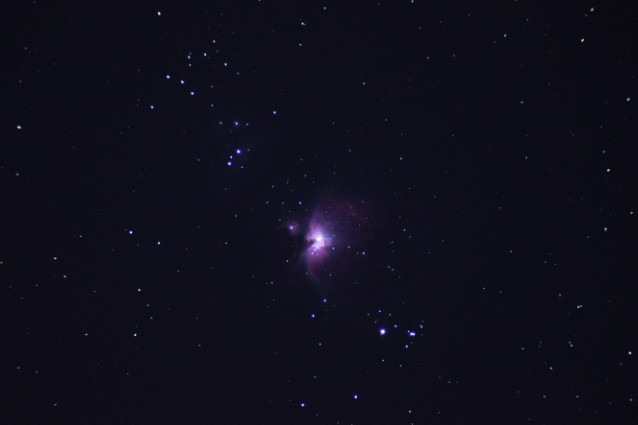 Simulated FOV with APS-C DSLR sensor (3.0° x 2.0°)
Simulated FOV with APS-C DSLR sensor (3.0° x 2.0°)Move mouse over to show full frame field.
The focal plane in particular of refractors with 2" focusers designed for 2" star diagonals lies way behind the focuser. Imaging with a long outward focuser travel to reach focus trades against stability and risk of optical axis tilt. Often, the focuser travel range is too short to achieve focus. An adapter with, say, 40mm optical path accepting a standard T-ring optimizes a photographic setup and mostly sports a filter thread. However, The lower the adapter part-count the more rigid is the imaging connection.
The objective lens holder unit can be unscrewed after removal of the Ø88mm ring at the objective entrance and full retraction of the dew shield. By loosening it, you will achieve two goals, 1. slightly changing the focal length and 2. a shaky optical axis. Better keep the lens unit firmly seated unless temporarily removing it for optical cleaning. Also, be sure not to loosen the focuser unit while only intending to rotate the camera.
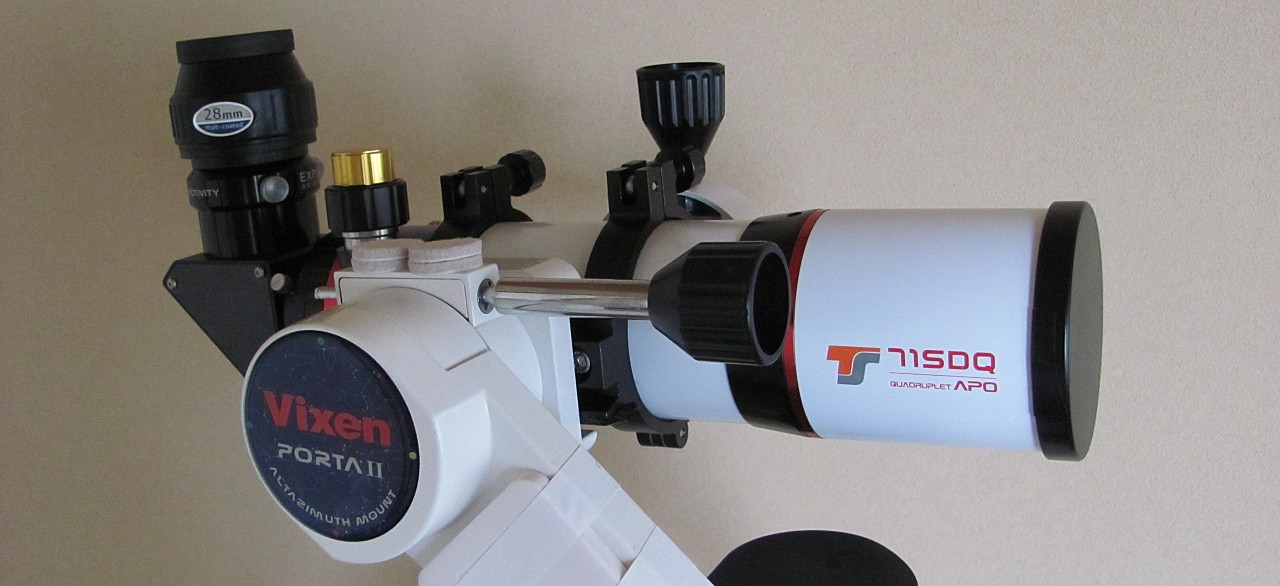 A nice couple, the TS71SDQ and Vixen's smooth and rigid Vixen Porta II mount for visual work and nature photography.
(Eyepiece, diagonal and Vixen plate holder are not bundled).
A nice couple, the TS71SDQ and Vixen's smooth and rigid Vixen Porta II mount for visual work and nature photography.
(Eyepiece, diagonal and Vixen plate holder are not bundled).
Visual Impressions
Visual evaluation is often subjective while system performance depends on the weakest element of a chain. A poor eyepiece can cause aberration even through a corrected quadruplet. An 1.25-inch Kokusai-Kohki Photon 12mm 60° Plössl offers a beautiful, contrast-rich view of Jupiter and Saturn with recognisable cloud bands and Cassini divison in steady air. A similar 'wow' impression though twice as close in a Svbony 6mm eyepiece with a 68° FOV. Even with a 2x barlow the image is not entirely washed out in both oculars. Bright deepsky objects, such as the Lagoon Nebula are a treat in a 18mm Explore Scientific 2" eyepiece with an 82° FOV. Comatic aberration in the outer edge (not telescope-related) is notable with a 2-inch 52° LET28mm Kellner eyepiece from Sky-Watcher, but the center view is crisp and clear.
 Getto flowers (月桃) about 50 meters away (with a 2x barlow Ø1.25", FL=1450mm), cropped and size reduced.
Getto flowers (月桃) about 50 meters away (with a 2x barlow Ø1.25", FL=1450mm), cropped and size reduced.
Sample Images
With an unmodified shelf Nikon D5300 DSLR
With a 2x barlow the focal length of the system typically doubles. However, when a DSLR replaces an eyepiece the distance between the barlow's lens and the DSLR
sensor plane is much longer thus influencing the total focal length. Consequently, a 2x barlow can act like a 3x to 3.5x barlow. The native focal length of the TS71SDQ then extends
to about 1450mm with a 2x barlow. Likewise, a barlow placed between the focuser and a star diagonal+eyepiece will give a magnification that is 1.5 times that of the one printed on the barlow.
The magnification factor is therefore determined by the distance of the barlow lens to the eyepiece or camera sensor.
The maximum meaningful barlow magnification largely depends on the size of the camera's sensor pixels (and seeing condition). As a rule of thumb, size x 5 is the maximum beyond which no more details can be resolved.
For the Nikon D5300 with 3.92µm pixels the limiting ratio is 3.92 x 5 =~f20, and 2.9 x 5 =~ f15 for a camera sporting the IMX585 image sensor.
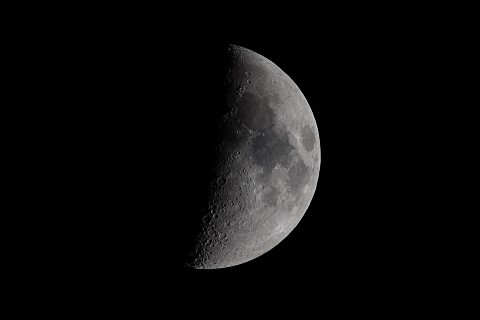 Moon in prime focus, ISO200, 1/400 sec
Moon in prime focus, ISO200, 1/400 sec
Out-of-the-camera cropped, else unprocessed image, no filters. The moon shows no color fringes whatsoever. Resolution, sharpness and contrast compete with a Ø150mm F5 Newtonian.
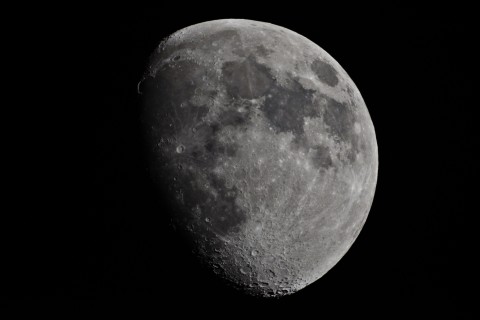 2x Barlow, ISO400, 1/125 sec, IR/UV cut filter
2x Barlow, ISO400, 1/125 sec, IR/UV cut filter
Uncropped high pass filter processed image with a 1.25" 2x barlow giving a focal length of about 1450mm (F20). Given the 3.92µm pixel size of the DSLR, F20 is the maximum meaningful ratio.
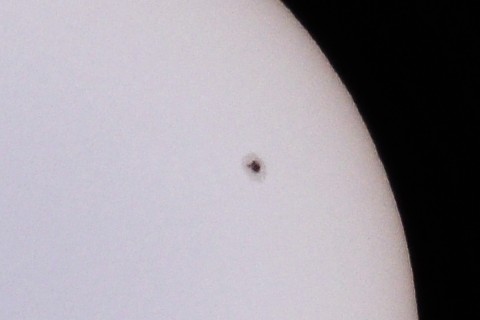 Sun spot 2738 on 2019-04-17 in prime focus.
Sun spot 2738 on 2019-04-17 in prime focus.
Baader AstroSolar Film, high-pass processed. The dark center is about the size of Earth. Compare with SOHO's image of the same day. Out-of-the-camera single unprocessed frame.
Lunar Images
The quality of lunar images largely depends on atmospheric seeing and air turbulence. Camera sensor noise is less critical as exposure times are typically in the millisecond range and can be cancelled by stacking several hundred frames. In fact, serious high-resolution imaging of the lunar surface and the planets requires a telescope with larger aperture, say reflecting telescopes from 5 inches or 127mm. The TS71SDQ is not really suitable for this purpose but fine for full disk images of the moon and the sun (the latter with safe protective solar filters).
 TS71SDQ, Uranus-C (IMX585) with UV/IR-Cut filter, 5ms at gain 180, 82fps, 600 frames stacked.
TS71SDQ, Uranus-C (IMX585) with UV/IR-Cut filter, 5ms at gain 180, 82fps, 600 frames stacked.
Full Screen
 TS71SDQ, ASI462MC (IMX462) with UV/IR-Cut filter, 1ms at gain 100, 138fps, 400 frames stacked, 2-pane mosaic.
TS71SDQ, ASI462MC (IMX462) with UV/IR-Cut filter, 1ms at gain 100, 138fps, 400 frames stacked, 2-pane mosaic.
Full Screen
 TS71SDQ, ASI462MC (IMX462) with IR742nm, 2x barlow, 2.5ms at gain 200, 138fps, 400 frames stacked, 8-pane mosaic.
TS71SDQ, ASI462MC (IMX462) with IR742nm, 2x barlow, 2.5ms at gain 200, 138fps, 400 frames stacked, 8-pane mosaic.
Full Screen
Deepsky Images
The quality of deepsky images in terms of aberration and coma depends on the optics (often also on tilt in the optical train and back focus issues) while atmospheric seeing and the camera sensor plus integration time are the main factors influencing image noise and dynamic range. Another critical factor is skill and experience in both image acquisition and processing.
TS71SDQ, Uranus-C (IMX585), Kenko Astro LPRII, 139 x 90 seconds each at gain 220.
Image FOV = 1.35° x 0.76°
TS71SDQ, Nikon D5300 (modified), Kenko Astro LPRII, 85 x 120 seconds at ISO1600.
Image FOV = 2.89° x 1.63°
TS71SDQ, Uranus-C (IMX585), IR-Cut filter, 55 x 60 seconds each at gain 200.
Image FOV = 1.36° x 0.76°
TS71SDQ, Nikon D5300 (modified), Kenko Astro LPRII, 60 x 120 seconds at ISO1600.
Image FOV = 2.89° x 1.63°
Test Images
Used imager is an unmodified Nikon D5300 DSLR with APS-C sensor.
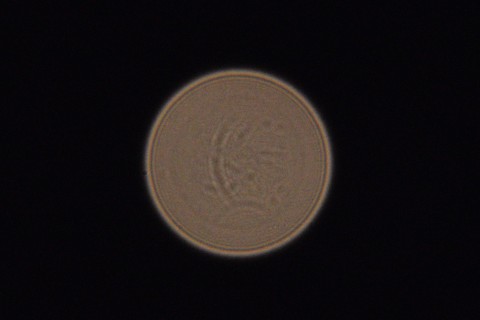 Intrafocal diffraction pattern of Arcturus.
Intrafocal diffraction pattern of Arcturus.
20mm inwards from focus. Exposure 2.5 seconds at ISO 1600.
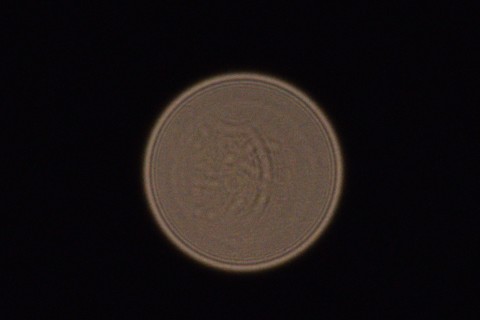 Extrafocal diffraction pattern of Arcturus.
Extrafocal diffraction pattern of Arcturus.
20mm outwards from focus. Exposure 2.5 seconds at ISO 1600.
Verdict
Pros
- Sharp, crisp, beautiful contrast
- Excellent chromatic and coma correction
- Top-class lens glass, high permeability
- Diagonal - barlow - eyepiece reach focus.
- Both tube rings threaded for accessories
- Compact, rigid, portable, finely crafted OTA
- Slip-free, smooth focuser
- Painless dual-speed focusing with F6.3 ratio
- No need for an optional flattener
- All OTA components threaded, tool-less disassembly
- Eliminates desire for upgrading, well, not too soon.
Cons
- Small image shift when tightening the focuser lock screw
- Lens cap sits loosely
Summary
An entirely regret-free purchase as well as a most convincing choice for all levels of astrophotography skills, both optically and mechanically, plus high portability. Owing to its integrated field flattener, high-end lens glass and optical coating, this little quadruplet is a most favorable combination of expense and satisfaction, also for novice and on-budget astrophotographers who wish to, and certainly will, enjoy using this telescope for a long time. A most pleasant reason for being left out in the dark.
Ein Einkauf gänzlich ohne Bedauern sowie eine sehr überzeugende Wahl sowohl optisch als auch mechanisch für alle Erfahrungsstufen in der Astrofotografie, plus ein hohes Maß an Mobilität. Hinsichtlich des eingebauten Bildfeldebners, hochwertiges Linsenglas sowie optischer Vergütung ist dieser kleine Vierlinser eine äussert vorteilhafte Kombination aus Kostenaufwand und Leistung unter anderem auch für Einsteiger und kostenbewußte Astrofotografen, die an diesem Teleskop lange Freude haben wollen und sicherlich haben werden. Die schönste Art und Weise in die Röhre zu gucken.
完全に後悔のない購入です。全ての天体撮影経験レベルの利用者に光学的にも機械的にも非常に説得力のある持ち歩きやすい望遠鏡です。 統合された「フラットナー」、そして高等レンスやコーティングの採用による、コストパフォーマンス率が非常に高くて、初心者も予算の厳しい方もこの4枚玉対物レンズアポクロマート鏡筒を長い間楽しみながら利用して頂けます。
Good-to-have Optional Accessories
The bare-bone TS71SDQ comes with nothing but a 63mm thread and well crafted 2-inch and 1.25-inch ring clamp adapters. This concept keeps the OTA price low offering numerous options for visual and imaging gear, some of which must not cost a fortune. Often bundled diagonals and eyepieces perform better than expected but they won't knock anybody out of the socks.
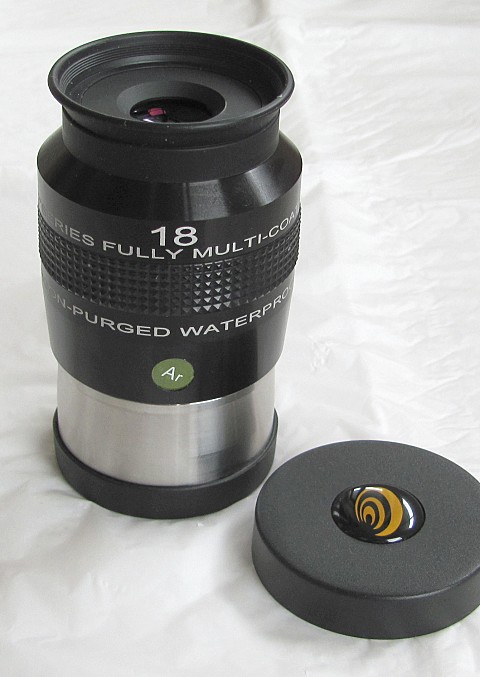
18mm 82° 2-inch wide-field eyepiece delivering splendid views with the TS71SDQ.
Eyepiece
Because it is rare to find an 2" eyepiece under 24mm focal length, the Explore Scientific 18mm with 82° field of view has been chosen for the TS71SDQ to provide 25x magnification. The waterproof eyepiece is composed of 7 elements arranged in 4 groups with EMD multilayer coating while argon-purged to protect against fungus and condensation on inward lens surfaces. Effectively placed internal flat black baffles entirely eliminate stray light for maximum possible contrast. Threaded for 2" filters, the eyepiece offers a wide field and an advertised eye relief of 13mm, but you need to get your eye closer than that to enjoy the specified field of view. The view through is contrast-rich and clear. Unfortunately, the outer edge of the view is dominated by an orange-tinted halo. No disaster and within acceptable norm for its FOV and price range. According to the manufacturer, its 82° and 100° series are designed with priority on field flatness for observation of dark DSOs.

The views of Saturn and the Lagoon Nebula through a Ø150mm Newtonian and a Ø71mm APO are a treat, as are Jupiter and the moon with an ND filter. Peripheral coma, if any, is negligible. The advertised eye relief of 13mm does seem to be shorter though.
Also laudable, the eyepiece can be disassembled for lens cleaning whenever need be. The first-light experience attested that 'low cost' eyepieces from China are not at all of low quality when they come from the right manufacturer. This eyepiece is an icebreaker hard to rival in its price domain.
Star Diagonal
A diagonal mirror does not only ease on your neck but also serves as an extension to get an eyepiece well into focus. For testing the TS71SDQ, the 2-inch Explore Scientific 90° diagonal with dielectric coating and 99% reflectivity was employed because it can take full advantage of the telescope's light gathering power. Comes with 1.25" adapter and is threaded for 2" filters.
Barlow
Depending on how it is sandwiched, a 2x barlow provides 1.6 to 3 times extended focal length and visual magnification (depending on the distance of the barlow lens to the camera sensor). The Kasai Trading 2x short barlow sports two fully multi-coated lenses and is mechanically designed with flexibility. When unscrewed, the lens portion provides a Ø48mm/0.75 male thread which accepts a Ø48mm T-ring or a 2" diagonal sleeve while the other side snaps into a 2-inch focuser or extension tube, such as the mechanical part of the barlow. Comes with native 1.25" adapter and is threaded for 2" filters. Optically not the best choice due to notable peripheral coma.
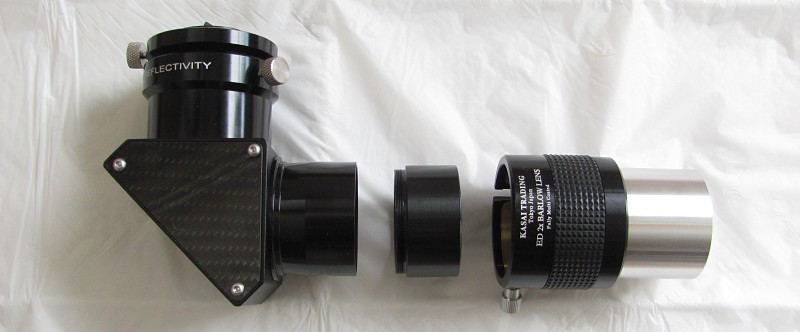
Sandwiching for Focus
When focuser travel is short, an eyepiece conventionally inserted into a barlow on a diagonal may not reach focus. However, with the unscrewed lens tube threaded to the diagonal's 2-inch sleeve and inserted into the barlow tube's brass acts like an extension for safely reaching the focal plane.Likewise, a DSLR with a mounted Ø48mm T-ring in place of the diagonal can be focused in this manner while increasing the system focal length to 750mm for 1.67x magnified imaging at a focal ratio of 10.6. So equipped it is possible to take magnificent photos of the moon and small deepsky objects with a DSLR employing an APS-C sensor which is fully illuminated, but please note that the so used barlow introduces edge coma. Unless expensive, a barlow lens is often the weakest light-freight car in an optical train.
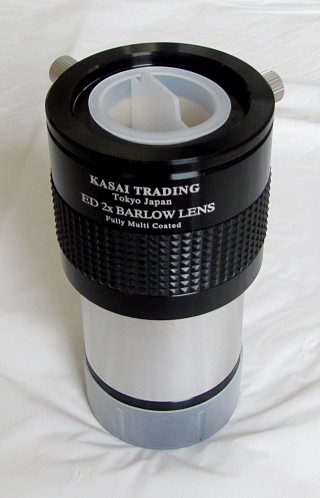
2x Barlow with removable 2" lens and 1.25" adapter. When the lens is removed the mechanical part can be used as a 2" extension tube.
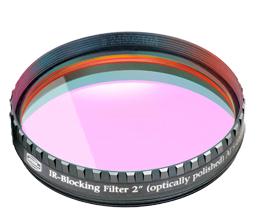
Example of a UV/IR-Cut Filter
Filters
Cell mounted filters for deepsky imgaging typically measure 2 inches in mechanical diameter with a metric thread of M48/0.75 while the clear aperture is typically 46mm. The high optical quality of the TS71SDQ eliminates need for enhancement filters, however, when not narrow-band imaging a Light Pollution Filter will help block artificial light for contrast enhancement and a darker background to allow less painful post-processing.
For general deepsky imaging, an UV/IR-Cut filter will help obtain sharper images because near-infrared wavelengths, invisible to the human eye but to the CMOS sensor, can wash out detail and contrast. Before you buy a filter, please confirm which kind of filter your camera has built-in. For instance, an IR-Cut window is used for the ZWO ASI178Mx and ASI120Mx-S, while all shelf DSLRs have a built-in IR-Cut filter placed over the sensor. Inbuild filters though may not be as good as filters specifically developed for astrophotography. DSLRs can be modified and fitted for deepsky imaging by removing the IR-Cut filter. Then external filters such as Quad-band, Dual-band and Narrow-band filters can be used for given imaging applications.
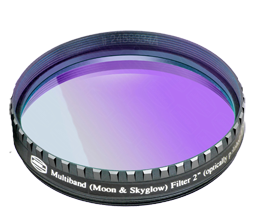
Example of a Moon and Skyglow (or light pollution) Filter.
Personal Hints
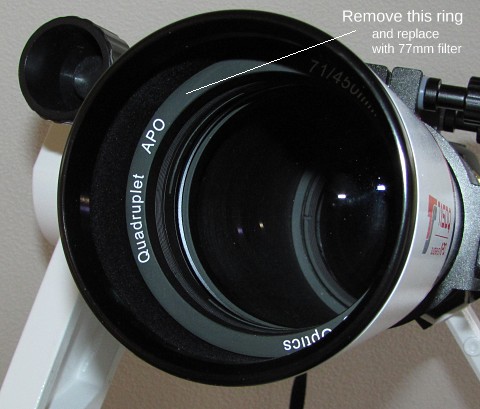
Stopper Ring with imprinted "Quadruplet APO".
Objective Filters
For Imaging Applications
It is not advertised, but you can use Ø77mm camera lens filters, such as LPR or ND filters, or a SAFE solar filter, threaded directly over the objective lens of the TS71SDQ. Light pollution filters are for example offered by Kenko Tokina ('Starry-Night' or, even better, 'Astro LPRII' filters). Just unscrew the dew hood and unthread the imprinted stopper ring. Ø77mm filters can then be threaded in place of the stopper ring. The dew hood can then be reattached. You are welcome to copy that but at your own risk.

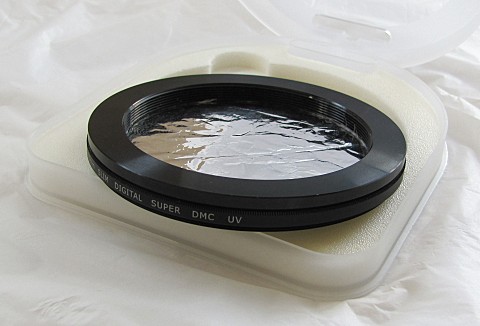
Home-brewed solar objective filter with a Baader solar filter sheet sandwiched in between a Ø77mm-62mm step-down ring and a Ø77mm UV filter. The combination reduces the telescope's aperture to Ø62mm, which is no problem for basic solar imaging.
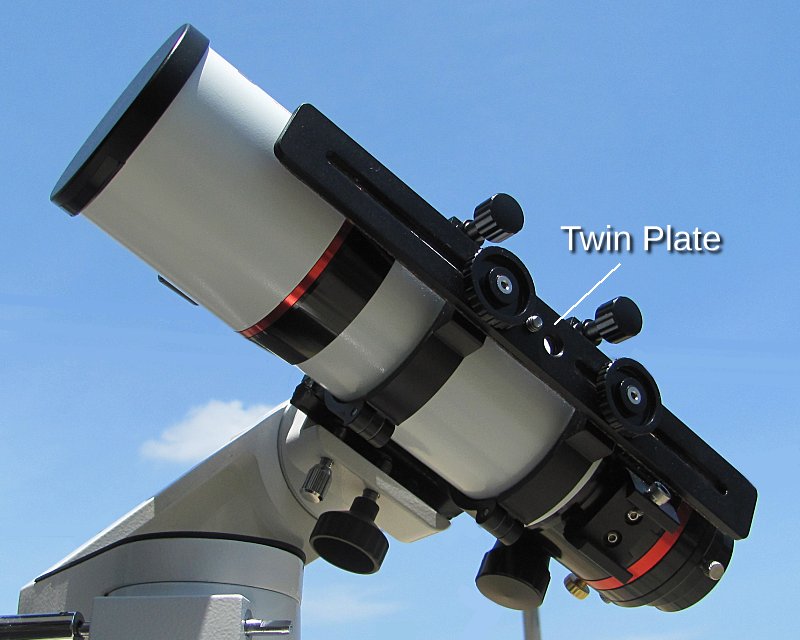
Useful twin plate mounted on tube rings.
Twin Plate
For Optional Accessories
A twin plate serves more than a single purpose. It is not only a grip for more safely holding the telescope, but also provides two threads, 1/4" and 3/8" each, for mounting a finder, guidescope, a camera on a ball head, other photo gear, or a smartphone holder. The product, for example that of the Japanese manufacturer Etsumi, which is about 180mm long and 30mm wide, has a 2mm thick cork layer on one side which protects the surface to which is it attached with two 1/4" knob screws, such as the telescope's tube rings as shown on the photo.

www.astropical.space
Printed on 2024-05-12
No liability whatsoever assumed.

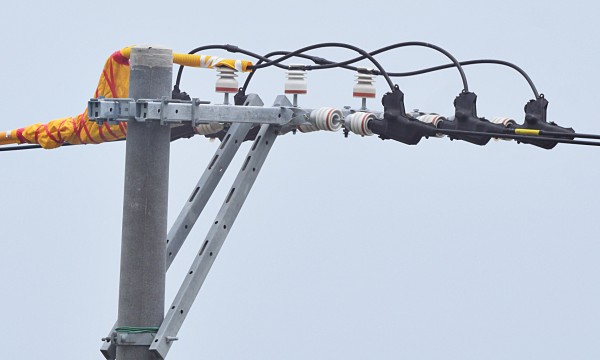

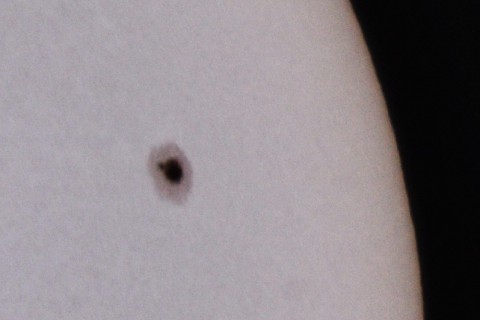 Sun spot 2738 on 2019-04-17 with 2x Barlow.
Sun spot 2738 on 2019-04-17 with 2x Barlow.




